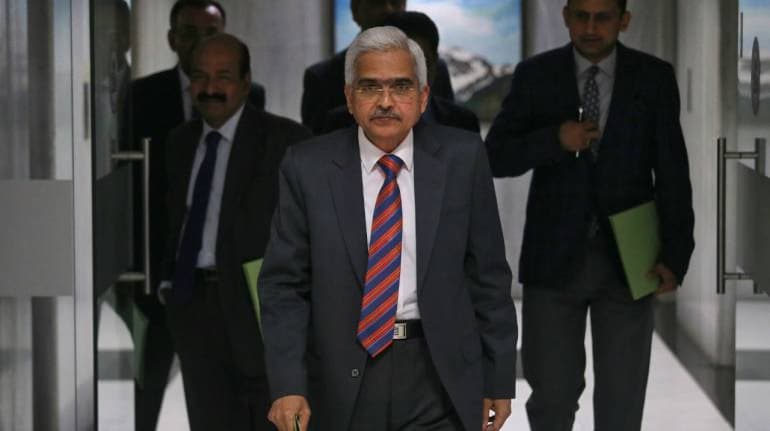



The Monetary Policy Committee (MPC) of the Reserve Bank of India (RBI) not just raised the policy repo rate by 25 basis points (bps) today to 6.50 percent but retained the policy stance at ‘withdrawal of accommodation’. Both these decisions were supported by a majority of four out of six MPC members. While the pace of rate hikes has slowed to 25 bps, this brings the cumulative increase in policy rates to 250 bps in the past nine months.
According to the RBI Governor, today’s decisions were supported by the facts that the global economic outlook does not look as grim now as it did a few months ago and the Indian economy looks resilient on the back of higher rabi acreage, sustained urban demand, improving rural demand, robust credit expansion, gains in consumer and business optimism and the central government’s thrust on capital (infrastructure) spending in the recently announced Union Budget. The MPC has placed its growth projection for FY24 at 6.4 percent with Q1 at 7.8 percent, Q2 at 6.2 percent, Q3 at 6.0 percent and Q4 at 5.8 percent. So far as the first half of FY24 is concerned, the MPC has significantly raised its growth projection from the previous policy.
Uncertain Outlook
The question is whether this growth optimism is justified. As per the World Economic Forum’s Chief Economists Outlook (January 2023), global growth prospects remain anaemic during 2023 and the risk of a global recession is very high. The IMF expects around a third of the global economy to enter a recession in 2023 and it has cut its forecast of global GDP to 2.9 percent in 2023 from 3.4 percent in 2022.
As regards the Indian economy, it is facing an increasingly uncertain outlook. Global headwinds coupled with a very gradual decline in public debt and fiscal deficits, contracting exports, uneven consumption recovery (which is more tilted towards high-spectrum income groups) and a very high unemployment rate will not let India achieve strong economic growth during FY24. While rabi acreage has been higher and well spread across major crops, unseasonal rains, hailstorms, etc. pose a downside risk. Year after year, Indian agriculture has been paying huge costs for such climate change-driven risks. Our in-house tracker on agriculture and rural economy shows that while ‘investment demand’ has improved in rural belts (thanks to the improved terms of trade and better kharif marketing season), rural consumption demand continues to stay weak.
The Purchasing Managers’ Index (PMI) and Index of Industrial Production (IIP) prints on manufacturing present a volatile picture month after month. As per the Business Standard study on Corporate Earnings, higher interest rates and finance costs have become a drag on corporate earnings. The combined interest expenses of 888 listed companies (excluding firms in the banking, financial services and insurance or BFSI space) rose 30.8 percent (y-o-y) in Q3, FY23, growing at the fastest pace in at least 17 quarters.
Incomplete Transmission
On the one hand, the transmission of past policy rate increases is still incomplete and on the other hand, there is a wide asymmetry in the pass-through of hikes to deposit and lending rates. This is the revealed behaviour of scheduled commercial banks. According to the RBI data, in the past eight months (May-December, FY23), the weighted average monthly term deposit rate of banks increased by 75 bps but the weighted average monthly lending rate (on fresh rupee loans) increased by 137 bps.
Interestingly a division has emerged among the global central banks. Whereas the US Federal Reserve, European Central Bank and Bank of England still remain in the ‘rate raising’ mode, the Bank of Canada has started shifting to the ‘pause’ mode. According to the latest comments from Tiff Macklem, Governor of the Bank of Canada, after raising interest rates eight times in 2022, the Bank of Canada may pause as it wants to evaluate the impact of its aggressive monetary policy on the Canadian economy. "We need to pause rate hikes before we slow the economy and inflation too much," he said in his speech to financial analysts on February 7, 2023).
Cooling Inflation
In India, both the consumer price index (CPI) and wholesale price index (WPI) inflation rates have been easing steadily, led by declining prices of domestic food articles and global commodity prices, especially of energy items. According to the Ministry of Consumer Affairs database, India’s food inflation has further eased in January 2023 due to a sequential fall in the prices of rice, all types of pulses, sugar, many varieties of edible oils, gur, vegetables and fruits. etc. Brent crude price too has declined from $94.83 per barrel in October 2022 to $84.53 in February 2023. While core inflation is still sticky, it covers many items with administered prices and its ‘stickiness’ is not the correct reflection of demand-pull forces.
Even before the announcement of today’s monetary policy, interest rates and bond yields in India were showing a strong upside bias against the backdrop of elevated central and state governments’ borrowing requirements and the increasing supply of corporate bond issuances. Between December 6 and February 8, the yield on 3-year corporate bonds for AAA-rated companies has gone by 20 bps. We expect the cost of borrowings for companies to go up further, as there is no clear indication as to when the interest rate cycle would peak for India. What we needed at this juncture was clearer forward guidance from the MPC.
Rupa Rege Nitsure is Group Chief Economist, L&T Financial Services. Views are personal and do not represent the stand of this publication.
Discover the latest Business News, Sensex, and Nifty updates. Obtain Personal Finance insights, tax queries, and expert opinions on Moneycontrol or download the Moneycontrol App to stay updated!
Find the best of Al News in one place, specially curated for you every weekend.
Stay on top of the latest tech trends and biggest startup news.